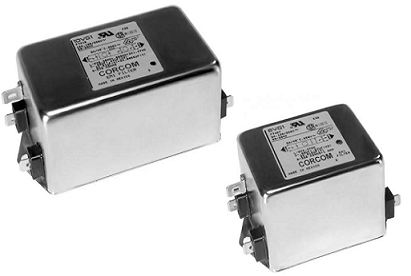Pushing the Limits: Advances and Competition in Radiation‑Hardened Electronics for Spacecraft Resilience

As space exploration and satellite deployments accelerate, the demand for radiation-hardened electronics designed to operate reliably in harsh space environments has never been greater. These specialized components protect critical systems from ionizing radiation, ensuring mission success for commercial satellites, defense reconnaissance, deep-space probes, and space station operations. Advances in material science, circuit design, and manufacturing offer new levels of resilience, efficiency, and flexibility, enabling NASA, ESA, and global commercial space players to push boundaries farther and longer.
According to Straits Research, "The global radiation-hardened electronics for space application market size was valued at USD 2.92 billion in 2024 and is expected to reach from USD 3.13 billion in 2025 to USD 5.39 billion in 2033, growing at a CAGR of 7.05% over the forecast period (2025-2033)." This steady growth is underpinned by rapid commercialization of space, growing defense surveillance needs, and increasing deployment of satellites in challenging orbits.
Advancements and New Developments
In 2025, the shift toward mixed radiation-hardened and radiation-tolerant solutions is helping balance cost and reliability, especially for small satellite constellations operating in low Earth orbit (LEO) versus deep space missions demanding full hardening. Leading manufacturers are incorporating novel process-hardened silicon on insulator (SOI) and silicon on sapphire (SOS) technologies to intrinsically increase radiation resilience at the semiconductor fabrication stage.
Artificial intelligence (AI) and edge computing chips optimized for radiation environments are becoming mainstream in space electronics, allowing complex data processing locally on satellites and unmanned vehicles, reducing reliance on ground stations. Neuromorphic computing and rad-hard FPGAs are emerging as future cornerstones enabling spacecraft autonomy and resilience.
Modular, commercial off-the-shelf (COTS)-based rad-tolerant components supporting flexible design trade-offs are expanding availability and reducing mission costs, especially for NewSpace ventures and emerging space nations. Ecosystem players focus on qualification speed and interoperability, facilitating faster time-to-orbit for satellites.
Leading Players and Competitive Landscape
The radiation-hardened electronics sector is dominated by a mix of long-established aerospace contractors and semiconductor innovators:
-
BAE Systems (UK): Commander in space-grade ASICs, FPGAs, and memory devices powering key ISR and communication satellites globally. Strong government partnerships sustain innovation pipelines.
-
Microchip Technology Inc. (US): Expands radiation-hardened microcontroller and power MOSFET portfolio, recently achieving MIL-PRF-19500 certifications for advanced components.
-
Renesas Electronics Corporation (Japan): Develops scalable rad-hard SoCs and analog/mixed-signal ICs targeting LEO and deep-space applications, focusing on low-power designs.
-
Infineon Technologies AG (Germany): Provides highly reliable rad-hard power management and logic ICs supporting European and global space missions.
-
STMicroelectronics (Switzerland): Offers radiation-hardened mixed-signal devices tailored for European space programs, enhancing power efficiency and durability.
-
Honeywell International Inc. (US): Supplies resilient flight control computers and embedded electronics for military and civil aerospace.
-
Texas Instruments and Analog Devices (US): Deliver rad-hard linear regulators, data converters, and power ICs enhancing satellite subsystem reliability.
-
Teledyne Technologies and Mercury Systems (US): Specialize in ruggedized and high-performance space-grade electronics.
Global and Regional Highlights
-
North America: U.S. leads globally with significant defense and NASA program investments driving rad-hard innovation, production scale, and early adoption of AI-enabled electronics.
-
Europe: ESA and national agencies support developments in Italy, Germany, UK, and France focusing on power management and embedded processing for satellites.
-
Asia-Pacific: Japan pushes semiconductor design and manufacturing for rad-hard devices, while emerging markets like India and China gradually enter with COTS-modified rad-tolerant solutions for expanding satellite constellations.
-
Other Regions: NewSpace companies and research institutions worldwide collaborate across borders to qualify and adopt radiation-hardened electronics for scientific and commercial missions.
Industry Trends and Growth Drivers
-
Rising space mega-constellations for broadband and IoT applications create growing demand for cost-effective, scalable radiation-hardened electronics.
-
Defense ISR platforms emphasize real-time, secure data processing requiring robust rad-hard processors and memory subsystems.
-
AI and machine learning chip deployment onboard spacecraft drive need for hardened accelerators and neural network processors.
-
COTS-based radiation tolerance adoption accelerates rapid prototyping, lowering costs for commercial space ventures.
-
Enhanced manufacturing processes enable improved reliability with smaller chip geometries resistant to single event upsets (SEU) and total ionizing dose (TID).
-
Growing interest in expandable rad-hard modular platforms allowing spacecraft reconfiguration and in-orbit upgrades.
-
Demand for low-power rad-hard devices critical for small satellites and deep space probes extends mission durations.
Recent News and Notable Developments
-
Microchip Technology announced completion of a new rad-hard MOSFET family in early 2025, achieving top-tier military and aerospace certifications critical for next-gen satellite mission reliability.
-
BAE Systems successfully qualified a new FPGA family for wide deployment in space ISR and communication satellites in mid-2025.
-
Renesas unveiled flexible packaging technology supporting both rad-hard and rad-tolerant applications to optimize cost-performance trade-offs for LEO constellations.
-
Honeywell secured a major contract to supply flight control and rad-hard avionics for next-generation military space platforms.
-
STMicroelectronics developed radiation-hardened power modules integrated into Europe’s Mars exploration missions.
-
Collaborative research by Carnegie Mellon University produced compact, high-tolerance rad-hard neuromorphic computing chips for autonomous space vehicles.
Outlook and Challenges
Though growing steadily, the radiation-hardened electronics sector faces challenges of high development cost, stringent qualification requirements, and supply chain complexities. The trend towards mixed rad-hard and rad-tolerant solutions seeks to balance affordability with resilience. Continued investment in advanced materials, AI-enabled design, and modular architectures signals a maturing industry ready to support the booming commercial and defense space efforts.
Closing Summary
Radiation-hardened electronics remain foundational for space technologies, enabling robust, intelligent spacecraft and satellites across orbits and missions. Ongoing innovations in AI cultivation, flexible chip designs, and global collaborations will fuel the sector’s steady growth—paving the way for the next era of space exploration and security.
- Art
- Causes
- Crafts
- Dance
- Drinks
- Film
- Fitness
- Food
- Games
- Gardening
- Health
- Home
- Literature
- Music
- Networking
- Other
- Party
- Religion
- Shopping
- Sports
- Theater
- Wellness


